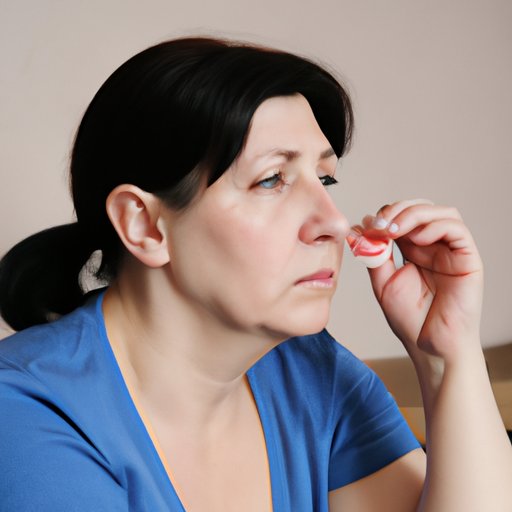
How to Stop Eyelid Twitching: Natural Remedies and Lifestyle Changes
Have you ever experienced a slight, repetitive twitching of your eyelid that won’t seem to go away? Eyelid twitching, also known as blepharospasm, is relatively common and usually not a cause for concern. It is often temporary and can be attributed to stress, fatigue, or eye strain. However, it can be annoying and lead to a decrease in quality of life. Fortunately, there are various ways to prevent and alleviate eyelid twitching. In this article, we’ll explore natural remedies, over-the-counter treatments, and lifestyle changes to help manage this issue.
Preventing Eyelid Twitching
Preventing eyelid twitching can be done by taking simple measures to relax your eyes. Limiting screen time for your eyes and taking breaks every 20 minutes can significantly reduce eye strain. Eye strain is a leading cause of blepharospasm and is often treated with the 20-20-20 rule. It’s easy to implement and involves taking a break every 20 minutes and focusing on something 20 feet away for 20 seconds to give your eyes a chance to rest. Additionally, practicing relaxation techniques like meditation or yoga can also lead to a significant reduction in stress and lower the chances of eyelid twitching.
Natural Remedies for Calming Eyelid Twitches
If you experience eyelid twitching, you may find natural remedies helpful in reducing the symptoms. Applying a warm compress to the affected eye for five minutes can provide immediate relief. You can also use chamomile tea bags, as chamomile has been found to have a calming effect on muscle spasms. Let the tea bags steep in hot water for a few minutes, allow them to cool, and then place them over your closed eyes. Also, try massaging your temples with essential oils such as lavender or peppermint oil to help relax the eye muscles.
Over-the-Counter Treatments for Eyelid Twitching
If non-invasive remedies don’t provide relief, you can try over-the-counter treatments like artificial tears or antihistamines. Artificial tears can soothe the surface of the eye and reduce eye irritation. Antihistamines, on the other hand, reduce inflammation and can be prescribed by your doctor if you’re experiencing allergic reactions such as itching or redness of the eye area.
Lifestyle Changes to Help Reduce Eyelid Twitching
Lifestyle changes can help reduce your chances of experiencing eyelid twitching. Getting more sleep is an obvious way to help decrease fatigue and stress. Eating a healthy diet also contributes to overall eye health and can lead to improved muscle function. Reducing alcohol and caffeine intake can also help lower chances of eyelid twitching or spasms.
When to See a Doctor
Most eyelid twitching is harmless, but there are times when you should seek medical attention. If your eyelid twitching persists for weeks or becomes more frequent, seek help from your doctor. Additionally, seek immediate medical attention if your eyelid completely closes or droops, or the twitch begins to involve other facial muscles. It’s also important to bring up eyelid twitching during regular eye exams and routine physicals. Potential medical conditions can cause eyelid twitching, such as blepharitis, dry eye syndrome, or even underlying neurological disorders.
Conclusion
Eyelid twitching is a common and usually temporary condition, but it can be frustrating. Fortunately, there are preventative measures in the form of natural remedies and lifestyle changes that can go a long way in improving eye muscles’ health. While it’s important to seek medical attention if necessary, the best way to prevent annoying eyelid spasms is to take care of your eye muscles by resting them during screen time, eating well, and minimizing stress as much as possible. In most cases, simple lifestyle adjustments and self-care techniques can help manage eyelid twitching and improve overall eye health.




